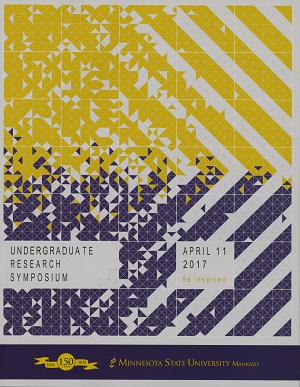Effect of Binder Saturation and Sintering on Stainless Steel - Hydroxyapatite Biocomposite Manufactured by 3D Printing
Location
CSU Ballroom
Start Date
11-4-2017 10:00 AM
End Date
11-4-2017 11:30 AM
Student's Major
Automotive and Manufacturing Engineering Technology
Student's College
Science, Engineering and Technology
Mentor's Name
Kuldeep Agarwal
Mentor's Department
Automotive and Manufacturing Engineering Technology
Mentor's College
Science, Engineering and Technology
Description
One of the major factors limiting use of implants is their failure prematurely. Most common biomaterials for implants are metals, alloys and ceramics. Bones have tensile strength of 70 – 150 MPa. However, mechanical properties of metals differ from bone: Stainless steel (SS) - tensile strength 586-1352 MPa. These differences lead to stress shielding resulting in loosening of implants due to degradation of human tissues around them. Calcium phosphates have best biocompatibility and properties closest to natural bones: tensile strength 38-48 MPa. However, they have poor fracture toughness that limits their application in implants. Therefore, there is a need for materials that combine mechanical performance of metals such as SS with biocompatibility of calcium phosphates. This work studies the effect of binder saturation and sintering on stainless steel – hydroxyapatite (HA) biocomposite during the 3D printing process. The ExOne 3D printing system is used to create samples of porous SS-HA composite. In the first step, 3D Printing creates a SS samples by adding a binder to the layer. This binder saturation is varied to create different porosities in the samples. Once the samples are “printed” they are subjected to two different time temperature curves during sintering. The sintering helps in changing the density and porosity of the material to match the desired properties of the bone. A total of 8 experiments are done by having 2 levels each of the binder saturation, sintering time and temperature and the results are reported comparing them to bone properties.
Effect of Binder Saturation and Sintering on Stainless Steel - Hydroxyapatite Biocomposite Manufactured by 3D Printing
CSU Ballroom
One of the major factors limiting use of implants is their failure prematurely. Most common biomaterials for implants are metals, alloys and ceramics. Bones have tensile strength of 70 – 150 MPa. However, mechanical properties of metals differ from bone: Stainless steel (SS) - tensile strength 586-1352 MPa. These differences lead to stress shielding resulting in loosening of implants due to degradation of human tissues around them. Calcium phosphates have best biocompatibility and properties closest to natural bones: tensile strength 38-48 MPa. However, they have poor fracture toughness that limits their application in implants. Therefore, there is a need for materials that combine mechanical performance of metals such as SS with biocompatibility of calcium phosphates. This work studies the effect of binder saturation and sintering on stainless steel – hydroxyapatite (HA) biocomposite during the 3D printing process. The ExOne 3D printing system is used to create samples of porous SS-HA composite. In the first step, 3D Printing creates a SS samples by adding a binder to the layer. This binder saturation is varied to create different porosities in the samples. Once the samples are “printed” they are subjected to two different time temperature curves during sintering. The sintering helps in changing the density and porosity of the material to match the desired properties of the bone. A total of 8 experiments are done by having 2 levels each of the binder saturation, sintering time and temperature and the results are reported comparing them to bone properties.
Recommended Citation
Ruprecht, John. "Effect of Binder Saturation and Sintering on Stainless Steel - Hydroxyapatite Biocomposite Manufactured by 3D Printing." Undergraduate Research Symposium, Mankato, MN, April 11, 2017.
https://cornerstone.lib.mnsu.edu/urs/2017/poster-session-A/46



